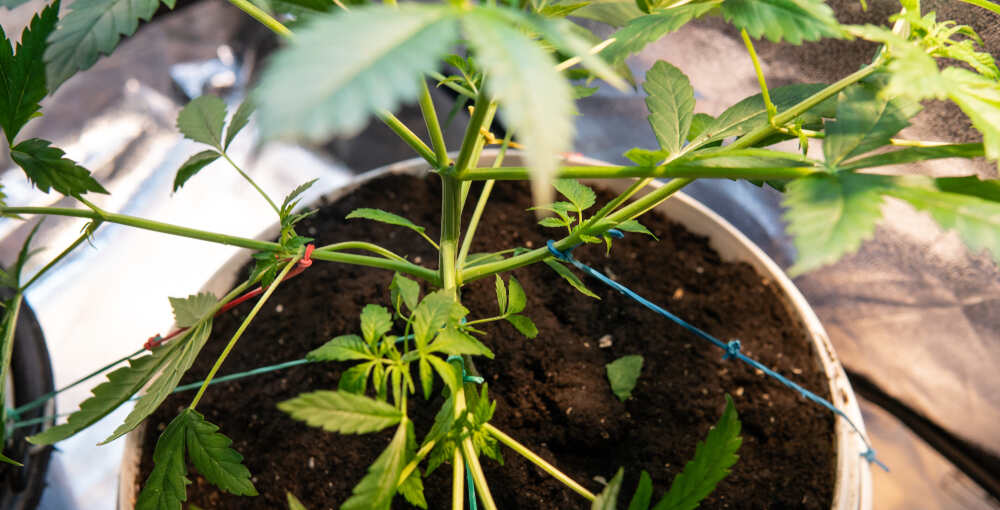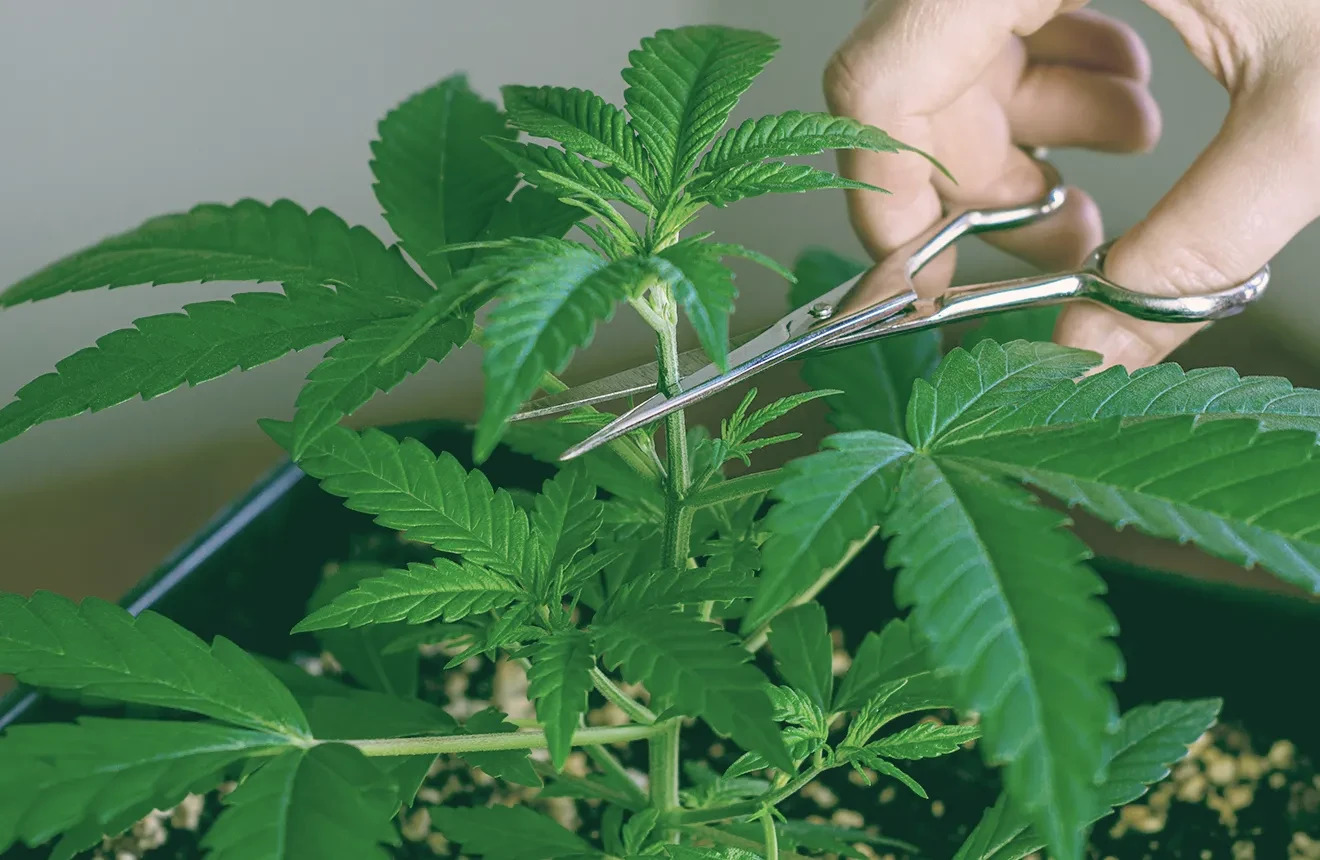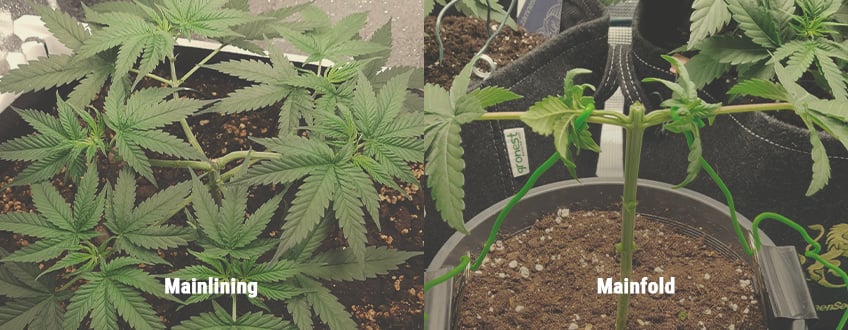Training Your Autoflowers For Big Yields
Every cannabis grower has heard of the potential benefits of training autoflowers. The best yields are achieved by maximizing the growing space, and training your autoflower plants can help you to do just that. Though it may seem a bit daunting for some, if done correctly, autoflower training can help you to get larger buds with more fragrance and potency than ever before.
Understanding Autoflower Cannabis
Auto-flowering cannabis has become increasingly popular amongst home cultivators. Unlike photoperiod strains, auto-flowering plants don't rely on a strict light cycle to flower; in fact, these plants will begin developing buds just three to four weeks after germination.
This makes them extremely easy to grow and allows the crop cycle from seed to harvest to be over within three months, much quicker than that of most photoperiod strains. When considering an auto-flowering strain, it is important to note that not all autoflowering seeds are created equal; it is wise only to purchase autoflower cannabis seeds from credible breeders.
Low-quality genetics can decrease yield, alter taste, and may even cause slower growth and eventual plant death if kept under the wrong environmental conditions. Professional breeders provide the safest option since they are experienced and knowledgeable in selecting reliable genetics suitable for autoflower growing.
More: How To Get Big Cannabis Yields Outdoors.
The Aim Of Training Autoflowers
Training autoflowers is a great way to maximize yields and optimize their structure. Autoflowers are different from regular cannabis plants because they are naturally triggered to start flowering based on age instead of light cycles.
However, the natural orientation of their growth is upward due to a hormone known as auxins. This hormone is typically located in the top part of the plant and encourages upward growth. Therefore, certain training methods may be used to shape the growth of an autoflower to produce larger yields and more colas - clumps of buds that grow along the main stem.
This involves manipulating the growth hormones where possible by trimming or tying down branches, removing fan leaves, or using education techniques such as SCROG (Screen of Green), LST (Low-Stress Training), FIM (Fimming), or topping.
All these techniques will help your autoflower stay uniform throughout development and can keep them shorter which helps improve airflow and light penetration during flowering.
In addition, proper training should also encourage more even distribution of energy between nodes so that all our bud sites at every stage get enough nutrients and light exposure resulting in higher yields with less stress on each branch/node.
The Main Concepts Of Autoflower Training
Autoflower training is a method used by cannabis growers to maximize the yield and potency of their plants. Autoflowering cannabis plants are unique in that they automatically transition from the vegetative phase to the flowering stage based on their age, rather than the light cycle. This makes them popular for their relatively short growing cycle and ease of cultivation.
Three main concepts of autoflower training experienced growers can use to optimize the growth of their plants:
Low-Stress Training (LST): Low-stress training is a gentle method of manipulating the plant's growth without causing significant stress or damage. LST involves bending and securing the branches to encourage horizontal growth and to expose more of the plant's canopy to light.
Topping and Fimming: While not as common in autoflowers as with photoperiod plants, some growers may choose to top or fill their healthy plants. Topping involves cutting off the top growth tip while fimming is a less precise technique where the grower pinches off around 75% of the top growth.
Defoliation: Defoliation is the process of selectively removing leaves from the plant to improve light source and airflow. This can be especially helpful in autoflowering plants, which often grow with dense foliage.
More: The Ultimate Cannabis Fluxing Guide.
The Most Effective Ways To Train Autoflowering Plants
Discover the most effective ways to train autoflowering cannabis plants for optimal yield and potency. By utilizing techniques such as Low-Stress Training, strategic topping, and cautious defoliation, indoor growers can maximize their plants' potential while minimizing stress, resulting in a bountiful and high-quality harvest.
H3: Low Stress Training Autoflowers
Low Stress Training (LST) is a technique commonly used on autoflowering plants since it does not overstress them. This method is used to induce more buds per plant, making it ideal for those limited in vertical gardening space.
It involves carefully manipulating the plant by bending and tying down branches without causing any severe damage to the plant itself. This low level of stress helps the side shoots become dominant, increasing bud growth and canopy coverage while keeping the height in check.
The best part about LST training autoflowering strains is that its effects are long-lasting, unlike other methods which require re-training every few weeks unless done with precision and skill. This makes LST practical for beginner growers as well as experienced gardeners alike; once set, you can just sit back and watch your plants flourish!
Although it can be tempting to go overboard with this method, patience is key when it comes to reaping the rewards; too much stress may stunt your autoflowers growth or reduce its yield potential in the long run.
Topping Autoflower Plants
Auto-flowering plants are an amazing asset to many growers who don’t have the time, space, or energy to nurture a normal flowering plant. Contrary to popular belief, topping autoflower strains can be beneficial and increase bud production.
Topping is a technique that requires cutting the main stem’s tip intentionally to encourage more outgrowths from the nodes found on the stem and as such, increase bud production too.
Despite this common growing practice, many amateur and novice gardeners might be wary of trying it on their autoflowers due to lack of expertise; however, this should not be necessary if done correctly.
When it comes to topping auto-flowers specifically, some think that taking off just the tip of the stem is unwise as it reduces overall growth and yield; however, others argue that if done properly (i.e avoiding large cuts anywhere on the plant), autoflower yields can often improve when compared to no topping at all.
SCROG
ScrOG, or Screen of Green, is an effective cultivation technique used by growers to maximize their yields. This method relies on using a screen placed below the canopy level to prune and train the plants so that they follow a certain pattern.
This ensures that each part of the plant receives the same amount of light and can generate full fruits and flowers. When employed properly with photoperiod plants, ScrOG can create stalks with many branches that can fill up the whole area evenly.
However, due to autoflowers’ preset cycle, applying ScrOG for these plants can be tricky and sometimes unhelpful because there is not enough time for training them on the screen before flowering time starts.
Therefore, depending on where you start from as a grower – whether from seedlings or already-growing plants – planning is important when attempting ScrOG with this type of strain. With enough care and preparation, growers will be able to utilize this useful resource to get bigger harvests while also avoiding having too much room left vacant under the screen.
Manifolding Cannabis And Mainlining Autoflowers
Manifolding cannabis and mainlining autoflowers are terms used to refer to a breeding technique that enhances bud production results later on. The technique involves creating a manifold, which is a pipe or chamber branching into multiple openings, on the seedling.
There are two main steps in this process: the main stem of the growing cannabis plant is split in half evenly, and then each side is connected with the two branches created. This natural way of getting the plant to grow its branches evenly distributes nutrients among all parts of the plant and helps maximize plant photosynthesis.
Mainlining autoflower training makes it possible for growers to get multiple large and uniform colas instead of just one, leading to significantly heavier yields.
Extra Growing Tips for Autos
It is important to remember that auto-flowering plants have a lower nutrient requirement than regular photoperiod cannabis varieties, so it's best to start with half-strength when giving them more nutrients. When growing in soil, you typically won't even need to add any extra fertilizer during the vegetative stage.
However, if you are using coco coir or a hydroponic setup, then you can use liquid “vegetative” nutrients, starting at 1/2 strength or less until you see signs of buds, which will usually appear around 4-5 weeks into the growth.
After the first signs of buds have started forming, you can begin adding “flowering” nutrients at very low strengths (1/2 strength to start). This helps to ensure that your autoflower plant isn't overfed and will get the nutrition it needs without being overburdened by too much nitrogen. Taking these steps helps make sure your autoflowering strains grow healthy and productive!
Potted Auto Plants
Potted auto plants are a great choice for novice gardeners who want to grow fast-flowering cannabis plants indoors or in limited spaces. Plants grown in pots tend to require more attentive care since they do not have access to natural soil and its nutrients like outdoor varieties do.
For this reason, potted auto plants need a much better airy potting mix than those grown outdoors. An ideal mix should have plenty of drainage holes and should also feature ingredients like perlite that help boost the aeration of the roots which encourages faster growth.
A good rule of thumb when selecting your potting mix is to opt for one that contains 20-30% extra perlite for increased drainage as well as oxygen circulation.
Strain & Final Size Have an Effect on Training
The strain of the auto plants plays a major role in determining its final size. Generally, autoflowering cannabis strains are bred to be very short in height – often less than 1-2 feet tall. However, some varieties have been optimized to grow taller, with some reaching heights up to 4 feet or more.
While most auto strains reach their flowering phase after just 3-4 weeks, there are also select “Super Autos” strains that take much longer – these can take even 8 weeks or more! To find out what kind of timeline you should expect from your plant, you must read the description from the breeder carefully.
If you want your plants to flower quicker than usual, you can switch them onto a 12/12 light schedule and this should kick start their flowering process within 1-2 weeks.
Bend Too-tall Branches Down And Away From The Center Of Your Plant
Bend-to-tall branches down and away from the center of your plant is a method of training that cannabis growers use to maximize yields indoors. By bending the branches down, it exposes more buds to light from the grow light, enabling them to get as big as possible.
The ultimate goal is for the plant to have no gaps or statues between bud sites, creating one swathe of large buds underneath the grow lamp. This will also reduce maintenance on pruning and trimming when it's time for harvest.
The bending process should start during the flowering period so that plants are already trained correctly in preparation for harvest. Start at the bottom and work your way up gradually if needed; avoid sudden jerks or twists which can lead to branches breaking off or deforming.
It's important not to tug too hard against stems, as they can snap easily so only make minor movements each time. The final result should be consistently even fan leaves spreading out across the top with an open canopy structure below them which lets in plenty of light throughout the entire plant.
Is Training Autoflowers a Good Idea?
In conclusion, training autoflowers can indeed be a good idea when done correctly, as it can lead to increased yield and potency in the final harvest. By employing training techniques such as Low-Stress Training, topping, fimming, and defoliation, growers can effectively manage plant growth, improve light penetration, and encourage the development of more budding sites.
However, it is crucial to remember that autoflowering plants have a shorter life cycle and can be more sensitive to stress compared to their photoperiod counterparts. As a result, careful consideration and a gentle approach are essential when training autoflowers to avoid stunting growth or causing undue harm. With the right balance, training autoflowering plants can be a rewarding endeavor that significantly enhances the overall cultivation experience.


 Français
Français 



